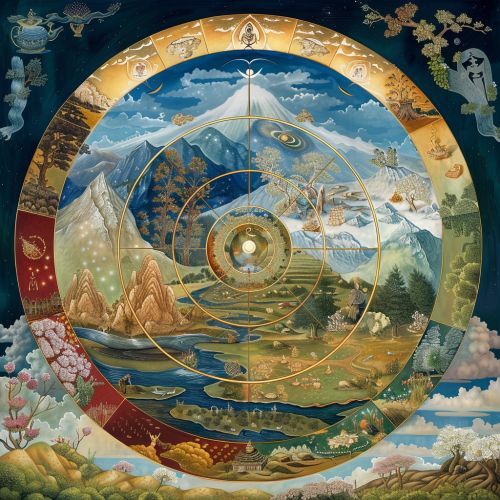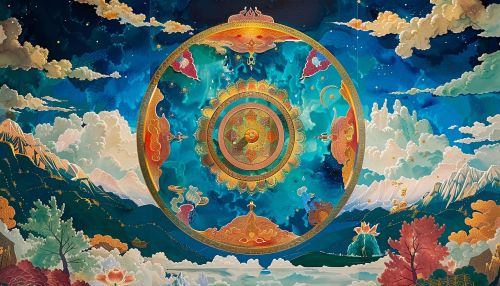Samsara
Overview
Samsara is a Sanskrit term that refers to the cycle of birth, death, and rebirth in Hinduism, Buddhism, Jainism, and Sikhism. It is a fundamental concept in these religions, representing the endless cycle of life and death that a being must go through until they achieve Moksha (liberation) or Nirvana (extinction). The concept of Samsara is closely related to the laws of Karma (action) and Dharma (duty), which dictate the quality of a being's lives and their progress towards liberation.


Origins and Etymology
The term 'Samsara' originates from the ancient Indian languages of Sanskrit and Pali. It is derived from the Sanskrit word 'samsṛ', which means 'to flow together' or 'pass through states'. This reflects the belief in the continuous flow of souls through various states of existence. The concept of Samsara is deeply rooted in the ancient Indian philosophical and religious traditions, and is a central theme in the Upanishads (philosophical texts), the Bhagavad Gita (scripture) and the teachings of the Buddha.
Concept
Samsara is the cycle of birth, death, and rebirth that all beings must go through. It is a process of constant change and transmigration, where a being is born, lives, dies, and is then reborn again. This cycle is influenced by the actions (Karma) of the individual in their previous lives. Good actions lead to a higher rebirth, while bad actions lead to a lower rebirth. The ultimate goal in these religions is to escape from this cycle and achieve liberation (Moksha or Nirvana).
Samsara in Different Religions
Hinduism
In Hinduism, Samsara is viewed as a cycle of suffering and illusion (Maya) that is driven by desire and ignorance. The goal is to achieve Moksha, the liberation from this cycle, through the realization of the true self (Atman) and the ultimate reality (Brahman).
Buddhism
In Buddhism, Samsara is the cycle of suffering (Dukkha) that is driven by desire, ignorance, and hatred. The goal is to achieve Nirvana, the cessation of suffering and the end of this cycle, through the Eightfold Path.
Jainism
In Jainism, Samsara is the cycle of birth and death that is driven by the accumulation of Karma. The goal is to achieve liberation (Moksha) by purifying the soul of Karma through right faith, right knowledge, and right conduct.
Sikhism
In Sikhism, Samsara is the cycle of birth and death that is driven by the Five Thieves (lust, anger, greed, attachment, and ego). The goal is to achieve liberation (Mukti) by living a truthful and selfless life, and by meditating on God's name.
Conclusion
Samsara is a complex and profound concept that is central to the understanding of many Eastern religions. It provides a framework for understanding the nature of existence, the causes of suffering, and the path to liberation. Despite the differences in their interpretations, all these religions agree on the fundamental idea of Samsara as a cycle of birth, death, and rebirth that is driven by one's actions and can be escaped through spiritual practice.
